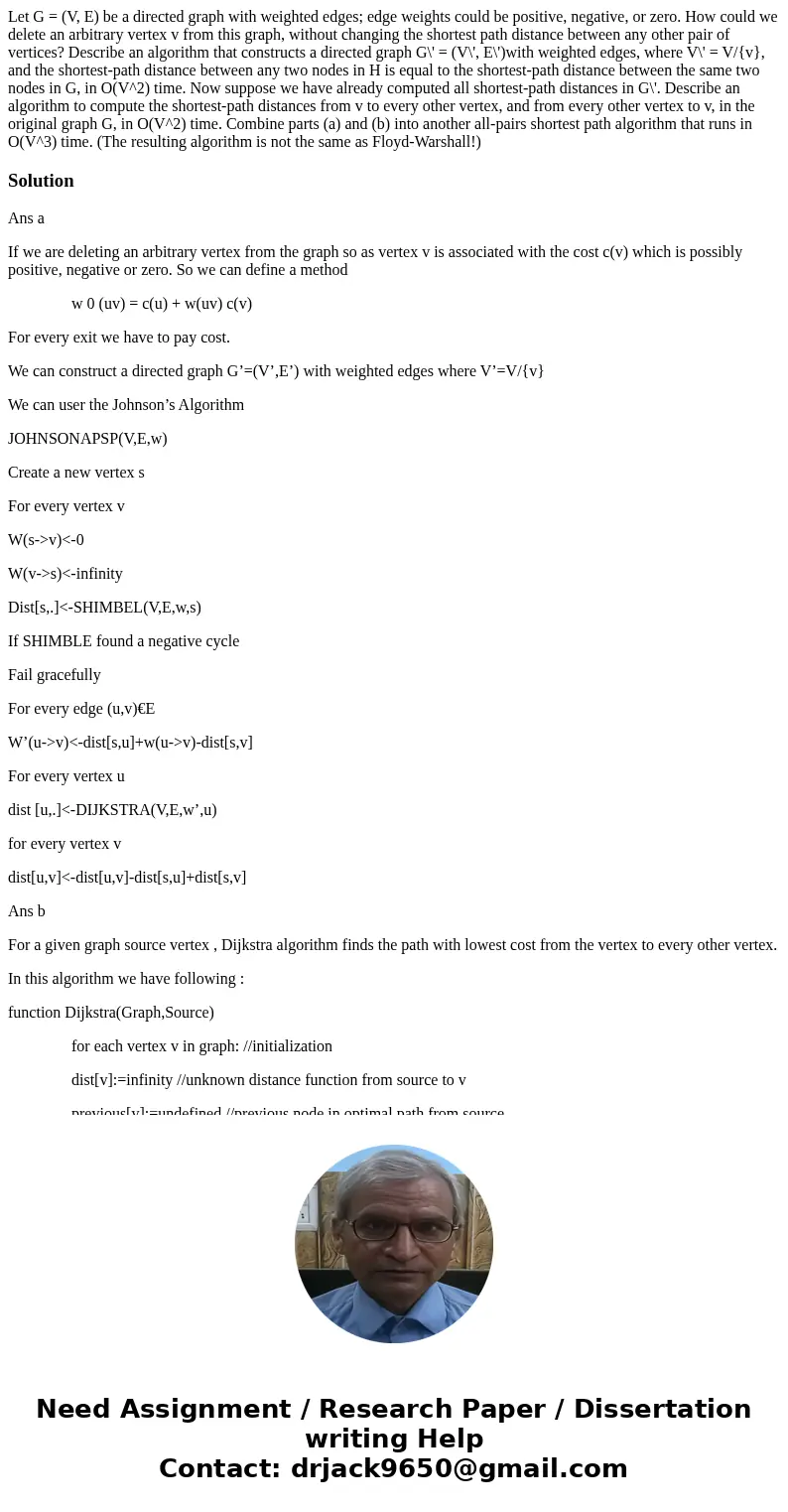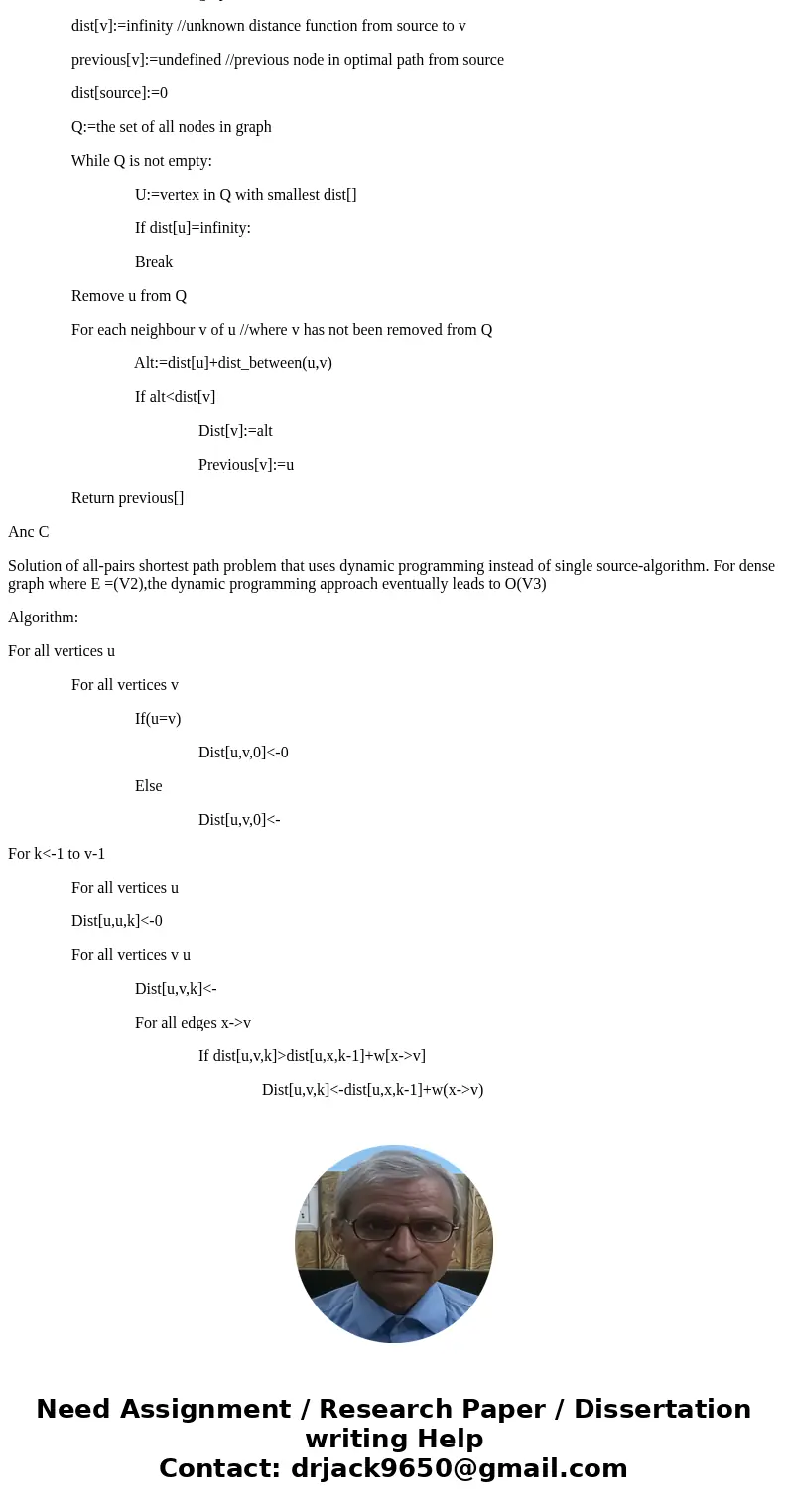Let G V E be a directed graph with weighted edges edge weig
Solution
Ans a
If we are deleting an arbitrary vertex from the graph so as vertex v is associated with the cost c(v) which is possibly positive, negative or zero. So we can define a method
w 0 (uv) = c(u) + w(uv) c(v)
For every exit we have to pay cost.
We can construct a directed graph G’=(V’,E’) with weighted edges where V’=V/{v}
We can user the Johnson’s Algorithm
JOHNSONAPSP(V,E,w)
Create a new vertex s
For every vertex v
W(s->v)<-0
W(v->s)<-infinity
Dist[s,.]<-SHIMBEL(V,E,w,s)
If SHIMBLE found a negative cycle
Fail gracefully
For every edge (u,v)€E
W’(u->v)<-dist[s,u]+w(u->v)-dist[s,v]
For every vertex u
dist [u,.]<-DIJKSTRA(V,E,w’,u)
for every vertex v
dist[u,v]<-dist[u,v]-dist[s,u]+dist[s,v]
Ans b
For a given graph source vertex , Dijkstra algorithm finds the path with lowest cost from the vertex to every other vertex.
In this algorithm we have following :
function Dijkstra(Graph,Source)
for each vertex v in graph: //initialization
dist[v]:=infinity //unknown distance function from source to v
previous[v]:=undefined //previous node in optimal path from source
dist[source]:=0
Q:=the set of all nodes in graph
While Q is not empty:
U:=vertex in Q with smallest dist[]
If dist[u]=infinity:
Break
Remove u from Q
For each neighbour v of u //where v has not been removed from Q
Alt:=dist[u]+dist_between(u,v)
If alt<dist[v]
Dist[v]:=alt
Previous[v]:=u
Return previous[]
Anc C
Solution of all-pairs shortest path problem that uses dynamic programming instead of single source-algorithm. For dense graph where E =(V2),the dynamic programming approach eventually leads to O(V3)
Algorithm:
For all vertices u
For all vertices v
If(u=v)
Dist[u,v,0]<-0
Else
Dist[u,v,0]<-
For k<-1 to v-1
For all vertices u
Dist[u,u,k]<-0
For all vertices v u
Dist[u,v,k]<-
For all edges x->v
If dist[u,v,k]>dist[u,x,k-1]+w[x->v]
Dist[u,v,k]<-dist[u,x,k-1]+w(x->v)


 Homework Sourse
Homework Sourse